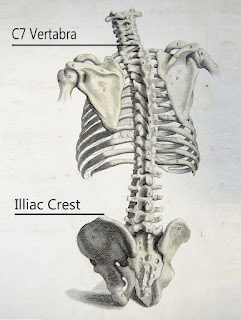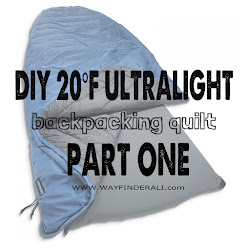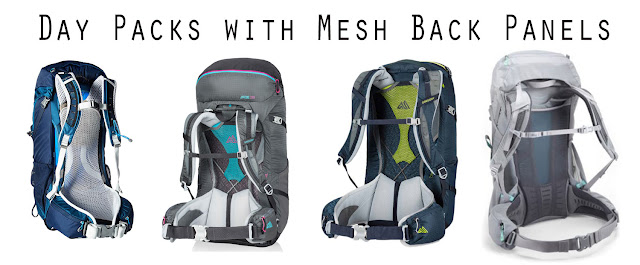Are you shopping for a day pack but feel overwhelmed by all the options? Will you be buying your first day pack? With so many packs on the market right now, choosing the right one can be tough. This post will help you make a decision with confidence and save you from buyers remorse.
I have owned and used lots of day packs over my 10 years teaching outdoors, in a wide variety of activities and conditions. I've learned the best features for different activities and environments.
I have owned and used lots of day packs over my 10 years teaching outdoors, in a wide variety of activities and conditions. I've learned the best features for different activities and environments.
What, Where, When and For How Long?
These are the questions that will help you decide what size day pack you need and what features will serve your needs best.What will you be doing? (in addition to hiking)
Where (will you be going) + When
Where you plan to go is important when choosing a pack. Do you live in a super hot climate? You might want a bag with a nice mesh back panel to keep your back cooler and drier. If you're headed out during the winter, a bigger bag will accommodate bulky winter clothing.
How Long?
It should go without saying that a 12 hour hike requires more food and more water, so you need more room!
Backpack Sizing
Backpacks will be labeled with two sizes- the torso size and the carrying capacity. Torso sizes are labeled small, medium, large and come in women's and men's versions. Carrying capacity is numbered in liters or cubic inches.
Carrying Capacity
Here is a general idea of what typical pack sizes are good for:
- 20 Liters- Ideal for short, light hikes close to civilization and cycling
- 30 Liters- Better for longer day hikes near civilization in temperate conditions
- 40 Liters- Ideal for all-day hikes in remote, rugged areas. Often the largest capacity to carry-on
- 50 Liters- Necessary for rock climbing or other gear-heavy activities. Also extremely cold locations or remote areas where you may carry more emergency supplies
Torso Sizing
 The torso size of the pack refers to what size human the pack fits. Torso size matters when your pack needs to carry more than 8-10 lbs. Your torso length is the distance from the top of your pelvis to your C7 vertebra. Most pack manufacturers use the sizing system small, medium and large for their packs and publish the range of torso lengths for each size.
The torso size of the pack refers to what size human the pack fits. Torso size matters when your pack needs to carry more than 8-10 lbs. Your torso length is the distance from the top of your pelvis to your C7 vertebra. Most pack manufacturers use the sizing system small, medium and large for their packs and publish the range of torso lengths for each size.Why does torso size matter?
Your spine is actually the largest and most complicated joint in your body. One of its many functions is to absorb impact from walking, running and jumping. If you carry the weight of your pack on your shoulders, not only will you be uncomfortable, but it is bad for your spine.
The illiac crest is the top of the pelvis and the place where our bodies are really good at carrying weight. You've probably noticed mothers like to use this spot to rest children they are carrying. The torso size of a pack is the measurement from hip belt to the shoulders- and correspond with the measurement from the illiac crest to the shoulder which is at the C7 vertebra.
Imagine for a moment that you are standing on a ladder. Your legs hold your weight, and your arms keep you from falling off the ladder. Now think of a pack. The hip belt holds the weight of the pack, and the shoulder harness keeps the pack against the body. You should not feel any downward pressure on your shoulders. If the torso size of the pack is incorrect, the shoulder harness will be too high or you won't be able to get the weight onto your hips.
Men's vs Women's- What's the difference?
 |
| Purple pack = women's medium. Green pack = men's medium |
- Men's torso's tend to be longer, therefore a men's medium will fit a slightly longer torso than a women's medium
- Men tend to have larger, wider shoulders than women, so the shoulder straps are both wider and longer
Features and Functions
What do you need? What do you want?
Internal Frame
Advantage: Allows you to distribute the load to your hips, keeping your back and shoulders from hurting. You can carry heavier loads with a frame.
Disadvantage: Packs with internal frames tend to weigh more than those without
Panel vs Top loading
Panel Loading: Has a zipper over the top and opens like a school backpack.
- Advantage: Easy to unzip to get to your stuff which means less digging around for things
- Disadvantage: If the zipper breaks, your stuff won't stay in the pack, and fixing zippers is not easy
Top Loading: Has a drawstring at the top and typically either a 'lid' or a brain' that closes over the opening.
Advantages:
Advantages:
- Opens at the top with a drawstring means you can cram more stuff in there.
- Drawstring is less likely to break, and much easier to repair if it does
- Having a "brain" (a pocket on the top of your pack with a zippered access) on the top of your pack allows you to put small things within reach without taking your pack off.
- Many top loading packs don't have side zippers to access stuff quickly, so if you need something toward the bottom you'll spend some time digging.
Compression straps are absolutely crucial.
- They keep the load closer to your center of gravity, making it easier to carry
- They also keep the contents of the bag from grouping at the bottom of the pack, forming a heavy ball at the bottom.

Pockets
In my opinion, pockets are always a good thing. I love internal and external pockets. Pockets are great for photographers who need fast access to equipment. If you're traveling with your pack, you may want a pocket that has slots for phones, pens, and other small objects. There are two types of pockets you absolutely want on every pack, and nearly every pack has them:
- Water bottle pockets
- A small pocket on top of the 'brain' to hold small items like chapstick and your phone
That being said, there are a couple of reasons not to have lots of pockets:
- More pockets = more weight
- Lots of smaller pockets don't do you any good if you only have things that are too big to fit in them
- Internal pockets or dividers may inhibit what you can fit in your bag
Do you need pockets?
- Are you carrying lots of little things that you want to keep organized?
- Do you need fast access to a variety of items?
If you answered yes to those questions, look for packs that have lots of external pockets.

Mesh back panels
Lots of daypacks these days have fantastic mesh panels against your back, which keep you cool and comfortable in hot weather, or if you're just a sweaty person. To get the most airflow, you'll want a pack with a good strong frame.
If you think you might be carrying large stuff that won't fit in your pack- like a tripod, or you're planning to push the limits of your pack's carrying capacity, you'll want to look for bags that have either external lashing straps or loops / MOLLE to attach your own straps or pockets.
Did you enjoy this post? Do you find my blog helpful? Buy me a coffee to help me keep this blog going!









